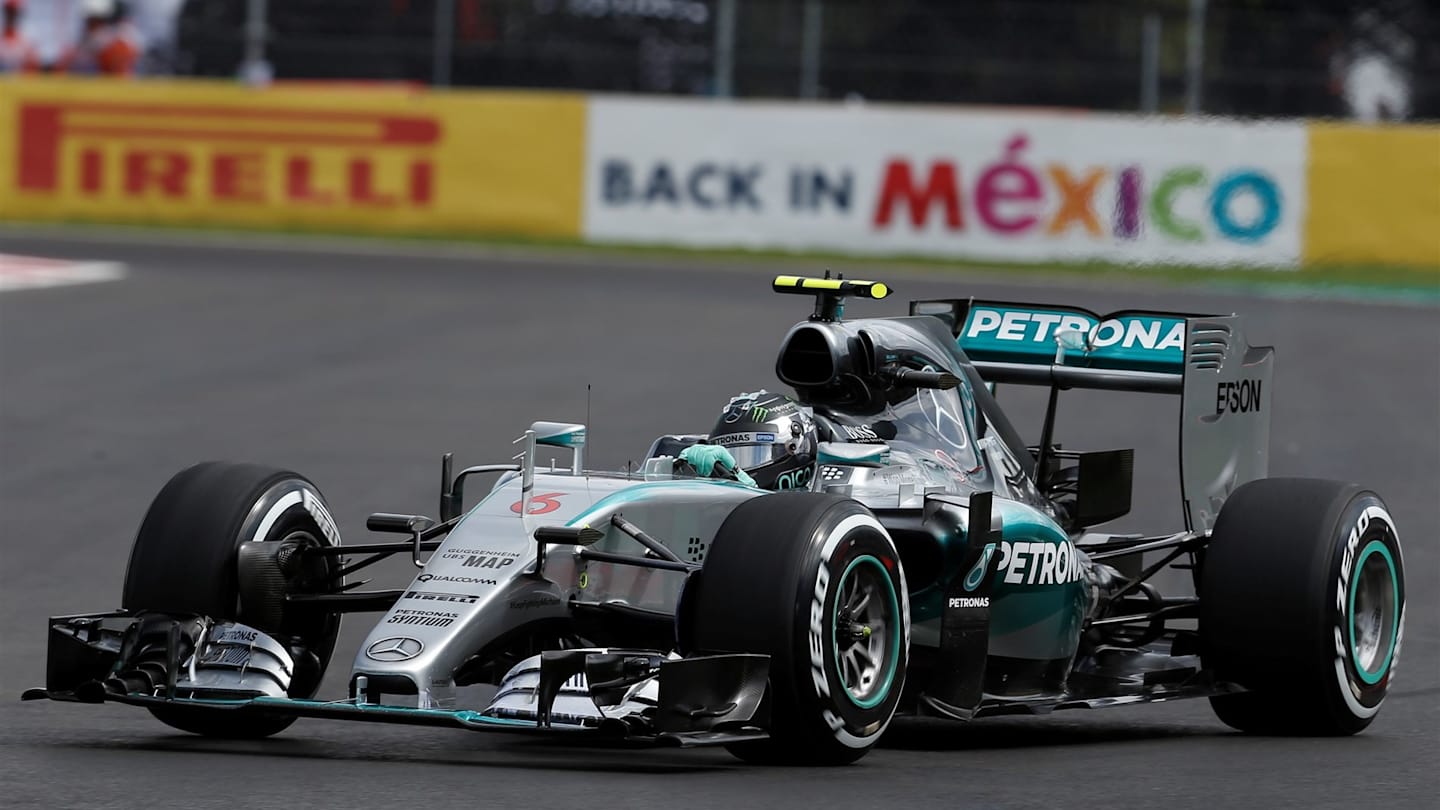
Feature
All-time high - the rigours of racing at altitude
Share

This weekend the Formula 1 Gran Premio de Mexico 2015 presents all the usual new circuit challenges to teams and drivers - but the Autodromo Hermanos Rodriguez introduces another variable: at 2.2km above sea level it’s comfortably - or uncomfortably - the highest race track F1 will visit. And that creates a new set of challenges for cars, for engines, and for drivers.
By comparison, Interlagos, the next destination and the second highest circuit on the 2015 calendar, sits at barely 800m above sea level. Autodromo Hermanos Rodriguez isn’t simply higher, it’s an entirely different order of higher.
Tough on turbos
So, what does that mean? Traditionally, the effect of altitude has been measured in terms of engine output. As altitude increases, air pressure drops and the thinner air has correspondingly less oxygen available for combustion, so power output falls. Typically, for every 100m increase in altitude, engine output dropped by about one percent. Back in 1992, when F1 racing last visited Mexico, engine power would be down by around 22 percent compared with, for example, sea-level Suzuka.
But, this doesn’t happen with the turbocharged engines. With the turbo forcing air into the engine at much the same pressure it would at lower altitudes, the power remains the same. It does mean the turbo has to work harder than it does elsewhere, however - and that has consequences for other parts of the powertrain.
“The turbo revolution does become higher at high altitudes, which means that the turbocharger must be of good quality and performance,” Honda’s engineers tell us, “but also the RPM of the compressor (MGU-H) is pulled higher along with the turbocharger and therefore loses regenerative efficiency. Furthermore, it the machinery is being air-cooled, it becomes more difficult as the air is [less dense] in the high altitude.”
Opening up, keeping it cool
Concern over cooling isn’t an issue purely confined to engine suppliers. “The engine will suffer the least,” observes Paul Monaghan, chief engineer - car engineering at Red Bull Racing. “All the other air-dependent systems, whether it’s brake cooling, engine cooling, gearbox, are going to struggle. In terms of running the car, we’re got to work with less air.”
The result will be a car more ‘opened up’ than usual, running maximised cooling packages. This manifests itself in bigger brake ducts and air intakes. Naturally this creates more drag - but the bonus of lower air density is that there’s less overall drag to contend with in the first place.
And of course, where there’s less drag, there’s also less downforce. “Performance-wise the amount of downforce you generate is going to be substantially less,” concedes Monaghan. “I’d expect teams to start off with something close to a high-downforce package to compensate. Given the lower drag I’d expect this weekend we’ll see some relatively high end-of-straight speeds even with some very large wings.”
Racing into the unknown
Engines and chassis aren’t the only things affected by the high altitude. The third factor is, of course, the driver.
1 / 2
“I guess the parallels with the engine are very similar in terms of the demand for oxygen,” says Mike Collier, sports scientist and physiotherapist for Jenson Button. “The Mexican Grand Prix is something of an unknown. We have other races at altitude and it hasn’t impacted the drivers physiologically - we haven’t raced anywhere near as high as Mexico City for a long time. It’s a different level. We’ll be taking subjective readings from the driver - but given practice tends to be short runs, I don’t think we’ll really get a true gauge until the race on Sunday.”
In other sports it’s customary for athlete’s to acclimatise to competing at high altitude - but the F1 calendar doesn’t allow drivers that luxury.
“What you’re looking for in acclimatisation is physiological adaptations,” continues Collier. “The capillaries and the amount of haemoglobin in the system changes; EPO is increased and that allows you to take in oxygen and distribute it to the muscles more efficiently - but we raced in Austin on Sunday, which really only leaves four days, whereas the bare minimum to acclimatise would be two weeks.
“Of course we don’t have that sort of time, so we’ll be reliant on the fact that we’ve done a sufficient amount of training over the course of the year. Obviously we’ll run the track and exercise outdoors to get used to the altitude - but in terms of full acclimatisation, we’re not here long enough.”
So, taking F1 racing back to a circuit over a mile high is tough on drivers and tough on cars - and these are excellent ingredients to leave the capacity crowd expected on Sunday breathless with excitement.
YOU MIGHT ALSO LIKE
Feature IN NUMBERS: How Verstappen’s team mates fared against him with Tsunoda the latest to step up
News ‘He’s not become the worst driver in two races’ – Ex-Red Bull junior Alguersuari sympathises with Lawson after Racing Bulls demotion
News ‘It’s tough’ – Lawson shares first message after Red Bull seat swap with emotional social media post
News ‘We have a duty of care to protect and develop Liam’ – Horner opens up on decision to replace Lawson at Red Bull






